As the air pollution is getting worse day by day and the heat from sun making our life unlivable, I was wondering how to make my indoor environment cooler and improve the air quality. So I did some research and found some clues that, some plants can does the tricks for me. So i dove into the deep and found Couple of the plants that I can grow inside the home which can make the air quality of home better and also can help to improve the interior decoration.
So these are the plants which not only looks good but giving us oxygen all day long.
1. The Snake Plant (Sansevieria trifasciata):
Unveiling the Serenity: Snake Plant – Your Green Guardian
In the world of indoor gardening, few plants embody elegance, resilience, and air-purifying prowess quite like the Snake Plant (Sansevieria trifasciata). Also known as Mother-in-Law’s Tongue or Saint George’s Sword, this remarkable plant has become a staple in homes and offices worldwide, not only for its striking appearance but also for its numerous benefits. Let’s delve into the world of the Snake Plant and uncover why it’s a must-have addition to any indoor green space.
Aesthetic Appeal
The Snake Plant’s architectural beauty is unparalleled. Its tall, upright leaves boast a striking pattern of green with vibrant yellow edges, resembling the skin of a serpent, hence its name.
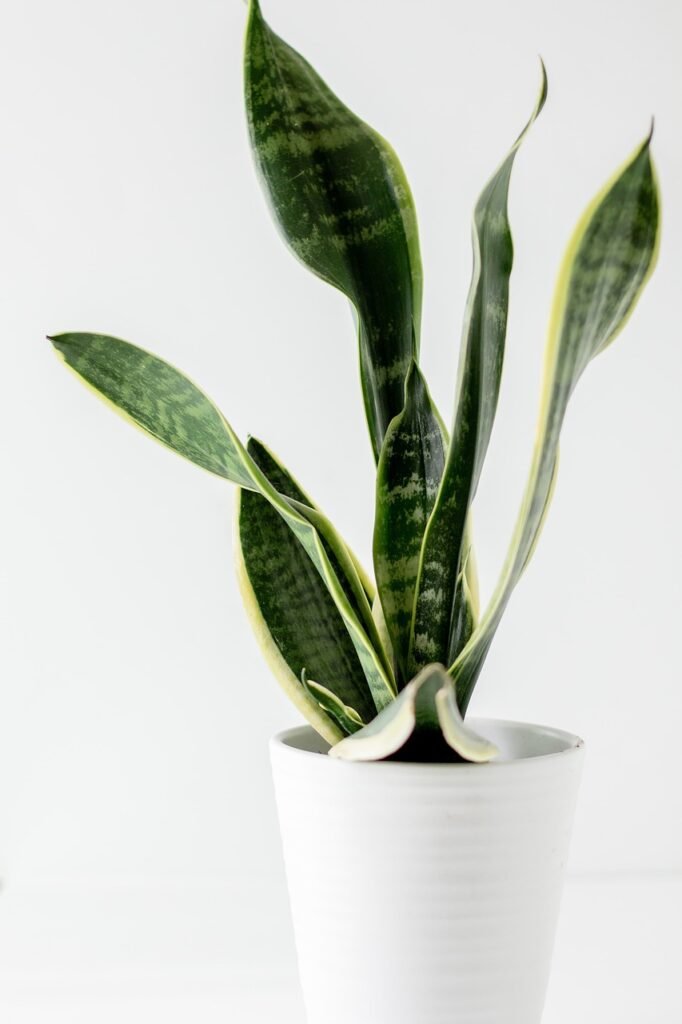
The plant’s leaves grow vertically, adding a touch of sophistication to any space. From modern apartments to traditional homes, the Snake Plant effortlessly enhances the aesthetic appeal of its surroundings, making it a favorite among interior designers and plant enthusiasts alike.
Air-Purifying Properties
Beyond its visual charm, the Snake Plant is renowned for its air-purifying capabilities. NASA’s Clean Air Study identified the Snake Plant as one of the most effective plants for improving indoor air quality. It has the remarkable ability to absorb toxins such as formaldehyde, benzene, xylene, and trichloroethylene, commonly found in household products and indoor environments. By introducing a Snake Plant into your home or office, you’re not only adding a touch of greenery but also enhancing the air you breathe.
Low Maintenance
One of the Snake Plant’s most appealing qualities is its low maintenance nature. This hardy plant thrives on neglect, making it perfect for busy individuals or those new to gardening. Snake Plants are drought-tolerant and can survive in low-light conditions, although they prefer indirect sunlight. They require minimal watering, with once every two to four weeks being sufficient. Overwatering is one of the few ways to harm a Snake Plant, so it’s best to err on the side of underwatering.
Health Benefits
The benefits of the Snake Plant extend beyond its air-purifying properties. Some studies suggest that having indoor plants like the Snake Plant can reduce stress, improve mood, and boost productivity. Additionally, the plant releases oxygen at night, making it an excellent choice for bedrooms to promote better sleep quality. Its presence can create a serene and tranquil atmosphere, contributing to a sense of well-being and harmony in your living or workspace.
Feng Shui Symbolism
In Feng Shui, the Snake Plant is revered for its ability to absorb negative energy and promote positive chi flow. Its upward growth pattern symbolizes vitality and resilience, while its sharp leaves are believed to ward off negative influences. Placing a Snake Plant near the entrance of your home or office is said to welcome prosperity and protect against harmful forces. Whether you believe in the spiritual significance or not, incorporating a Snake Plant into your space can bring a sense of balance and harmony.
The Snake Plant is more than just a decorative houseplant; it’s a symbol of elegance, resilience, and well-being. With its stunning appearance, air-purifying prowess, and low maintenance requirements, it’s no wonder that the Snake Plant has earned its place as a beloved favorite among plant enthusiasts. Whether you’re looking to spruce up your interior décor, improve indoor air quality, or simply add a touch of serenity to your surroundings, the Snake Plant stands ready to be your green guardian, enriching your life one leaf at a time.
2. The Peace Lily (Spathiphyllum):
Embracing Serenity: The Graceful Peace Lily
In the bustling world we inhabit, finding moments of tranquility can feel like a precious treasure. Amidst the chaos, there exists a silent ambassador of serenity—the Peace Lily (Spathiphyllum spp.). With its elegant white blooms and lush green foliage, this resilient plant not only adds a touch of natural beauty to any space but also serves as a symbol of peace and harmony.
A Symbol of Peace
The Peace Lily, also known as the Spath or Closet Plant, is more than just a decorative houseplant. Originating from the tropical rainforests of Central and South America, this botanical gem has long been revered for its symbolism. In many cultures, the
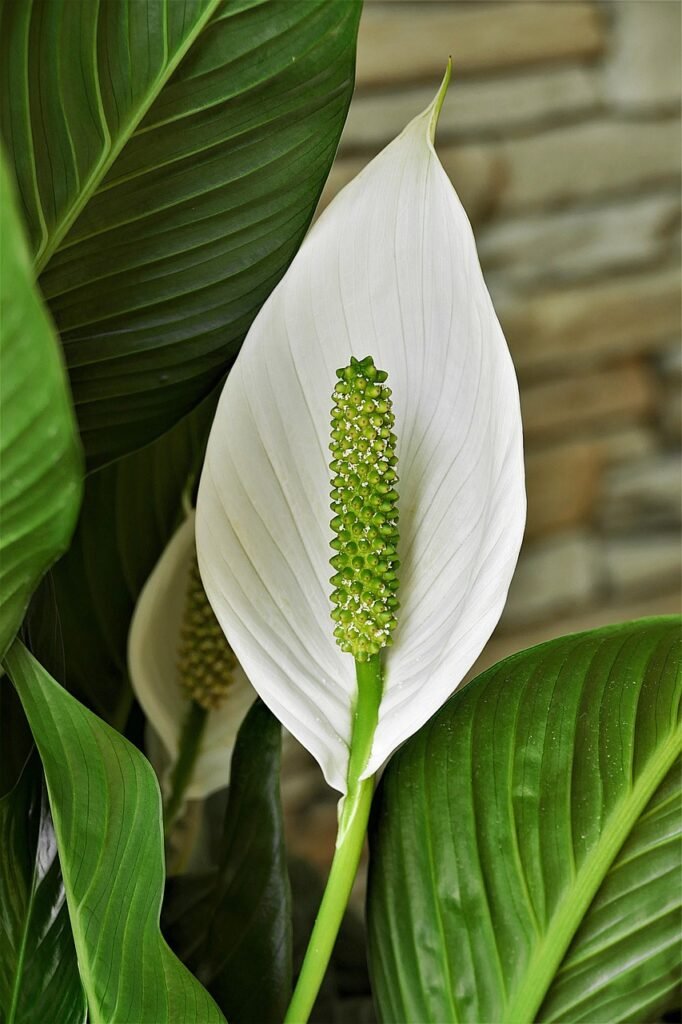
Peace Lily represents tranquility, purity, and the renewal of the human spirit. Its graceful white flowers, reminiscent of a dove in flight, evoke a sense of calmness and inner peace.
Graceful Elegance
One of the most striking features of the Peace Lily is its graceful appearance. The plant boasts glossy, dark green leaves that rise elegantly from the soil, forming a lush canopy. Atop these verdant leaves, slender stalks emerge, bearing delicate white flowers that exude a subtle fragrance. The contrast between the vibrant foliage and the pristine blooms creates a mesmerizing display that captivates the eye and soothes the soul.
Resilient and Forgiving
Beyond its aesthetic appeal, the Peace Lily is celebrated for its resilience and forgiving nature. Unlike some finicky houseplants, this botanical beauty thrives in low-light conditions, making it an ideal choice for offices, bedrooms, and other indoor spaces with limited sunlight. Additionally, the Peace Lily is relatively low-maintenance, requiring only occasional watering and occasional fertilization. Even if neglected for a time, it has a remarkable ability to bounce back with minimal care—a testament to its enduring spirit.
Purifying the Air
In addition to its visual allure, the Peace Lily offers practical benefits as well. This remarkable plant has been scientifically proven to purify the air by removing harmful toxins such as formaldehyde, benzene, and trichloroethylene. By absorbing these pollutants through its leaves and roots, the Peace Lily helps create a healthier indoor environment, promoting both physical and mental well-being.
Cultivating Peace
Caring for a Peace Lily is a rewarding experience that fosters a deeper connection to nature and instills a sense of mindfulness. Whether placed on a desk, a windowsill, or a bedside table, this gentle plant serves as a constant reminder to pause, breathe, and embrace the present moment. Its presence invites us to cultivate inner peace and serenity amidst the chaos of daily life, offering a sanctuary of calm in our busy world.
In a world filled with noise and distraction, the Peace Lily stands as a beacon of tranquility—a reminder of the beauty and power of simplicity. Its graceful form, resilient nature, and symbolic significance make it much more than just a houseplant—it is a living embodiment of peace and harmony. So, the next time you seek solace from the hectic pace of modern life, look no further than the gentle embrace of a Peace Lily, and let its serene presence wash over you like a soothing balm for the soul.
3. Aloe vera:
The Versatile Wonder: Aloe Vera – Nature’s Gift to Health and Beauty
In the realm of natural remedies and skincare, few plants hold as much esteem and versatility as the humble Aloe vera. Revered for centuries for its myriad of health benefits and healing properties, Aloe vera has earned its place as a staple in households worldwide. From its soothing gel to its resilient leaves, this succulent plant has captured the attention and admiration of botanists, herbalists, and beauty enthusiasts alike.
Origins and History
Aloe vera, believed to have originated in the Arabian Peninsula, has a rich history dating back thousands of years.
Ancient civilizations, including the Egyptians, Greeks, and Romans, prized Aloe vera for its therapeutic properties and often referred to it as the “plant of immortality” or the “wonder plant.” Its use in traditional medicine spans continents, with cultures from Asia to Africa harnessing its healing potential for various ailments.
Medicinal Properties
The gel found inside Aloe vera leaves is a treasure trove of medicinal compounds. Rich in vitamins, minerals, enzymes, and amino acids, Aloe vera gel possesses anti-inflammatory, antimicrobial, and antioxidant properties. It is renowned for its ability to soothe and heal skin irritations, burns, cuts, and wounds. Additionally, Aloe vera gel is often used to alleviate sunburn, moisturize dry skin, and reduce acne and blemishes.
Beyond skincare, Aloe vera is consumed internally for its potential health benefits. Drinking Aloe vera juice is believed to aid digestion, promote gut health, and boost the immune system. Some studies suggest that Aloe vera may also help lower blood sugar levels and reduce inflammation in conditions like arthritis.
Beauty and Skincare
In the realm of beauty, Aloe vera’s benefits are manifold. Its hydrating and moisturizing properties make it a popular ingredient in skincare products, including lotions, creams, and face masks. Aloe vera’s gentle nature makes it suitable for all skin types, including sensitive and acne-prone skin. Regular use of Aloe vera-infused products can help improve skin texture, reduce fine lines and wrinkles, and impart a healthy, radiant glow.
Cultivation and Care
Cultivating Aloe vera is relatively straightforward, making it an excellent choice for both novice and experienced gardeners. Aloe vera thrives in warm, sunny climates and well-drained, sandy soil. While it can tolerate periods of drought, regular watering is essential for optimal growth. Aloe vera plants should be potted in containers with proper drainage holes to prevent waterlogging, and they benefit from occasional fertilization during the growing season.
Aloe vera stands as a testament to the power and beauty of nature’s bounty. Its remarkable healing properties, coupled with its ease of cultivation, have endeared it to people around the globe for millennia. Whether used for medicinal purposes, skincare, or simply as a decorative plant, Aloe vera continues to captivate hearts and minds with its versatility and charm. Embrace the wonders of Aloe vera and discover the many ways it can enrich your life and well-being.
4. The Spider Plant (Chlorophytum comosum):
Unveiling the Elegance of the Spider Plant: A Guide to Cultivation and Care
In the world of indoor gardening, few plants are as iconic and beloved as the Spider Plant (Chlorophytum comosum). With its gracefully arching leaves and air-purifying qualities, this resilient houseplant has captured the hearts of enthusiasts worldwide. Join us as we delve into the fascinating world of the Spider Plant, exploring its origins, cultivation techniques, and tips for optimal care.
Origins and Botanical Features
The Spider Plant, native to tropical and southern Africa, derives its name from its spider-like appearance.
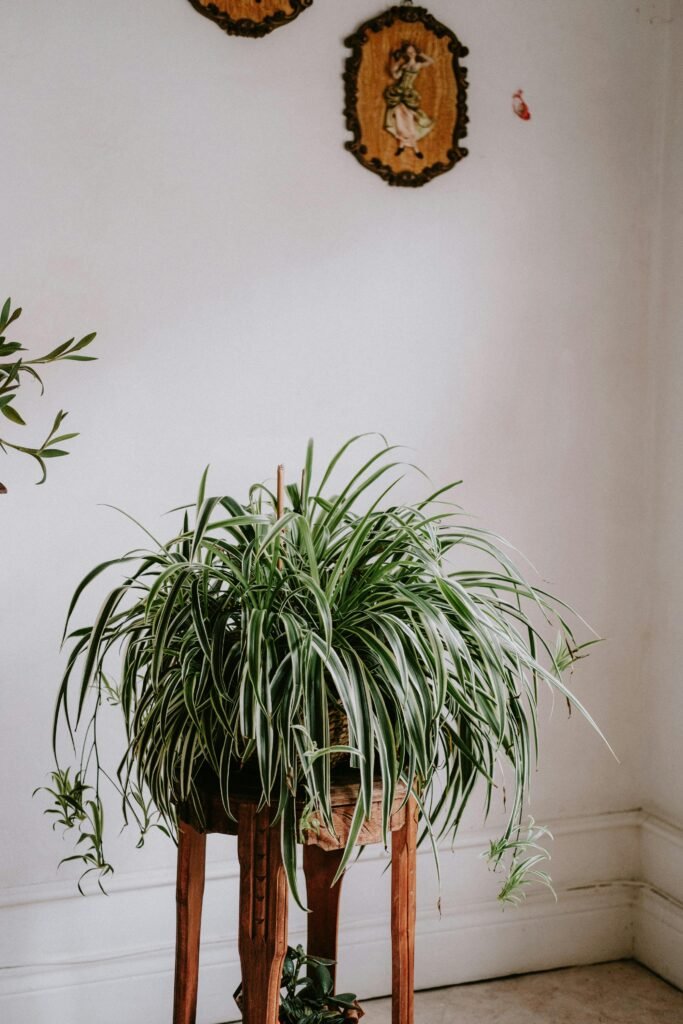
Its long, slender leaves cascade elegantly from the center, resembling the legs of a spider. This plant is renowned for its adaptability and ability to thrive in various conditions, making it a popular choice for both novice and experienced gardeners alike.
Benefits and Uses
Aside from its aesthetic appeal, the Spider Plant offers several benefits that make it a valuable addition to any indoor space:
Air Purification: Spider Plants are renowned for their air-purifying abilities, removing harmful toxins such as formaldehyde and benzene from the air. Placing them in your home or office can help improve indoor air quality and create a healthier environment.
Low Maintenance: With minimal care requirements and a high tolerance for neglect, Spider Plants are an excellent choice for busy individuals or those new to gardening.
Aesthetic Appeal: The graceful foliage of Spider Plants adds a touch of elegance to any room, whether displayed as a hanging plant or placed on a tabletop or shelf.
Symbolism: In some cultures, Spider Plants are associated with good fortune, prosperity, and positive energy, making them popular gifts for housewarmings and other occasions.
With its striking appearance, air-purifying qualities, and ease of care, the Spider Plant remains a beloved favorite among indoor gardeners. Whether adorning a sunny windowsill, hanging gracefully from a macramé planter, or adding a touch of greenery to a dimly lit corner, this versatile plant brings beauty and vitality to any space. By following the cultivation tips outlined above and addressing any issues promptly, you can enjoy the timeless elegance of the Spider Plant for years to come.
5.English Ivy (Hedera helix):
Unveiling the Enchantment of English Ivy: A Timeless Classic in Gardening
In the lush tapestry of garden foliage, few plants weave a tale as enchanting and enduring as the English Ivy (Hedera helix). With its trailing tendrils and verdant leaves, this iconic evergreen vine has captivated gardeners and homeowners for centuries, adorning walls, fences, and arbors with its timeless elegance and unrivaled charm.
A Botanical Emblem: Originally hailing from Europe and Western Asia, English Ivy has traversed continents and cultures to become a cherished emblem of classical gardens and landscapes. Its botanical name, Hedera helix, derives from the Greek word “hedra,” meaning “to cling,” a testament to its remarkable ability to gracefully cling to vertical surfaces, transforming ordinary structures into living works of art.
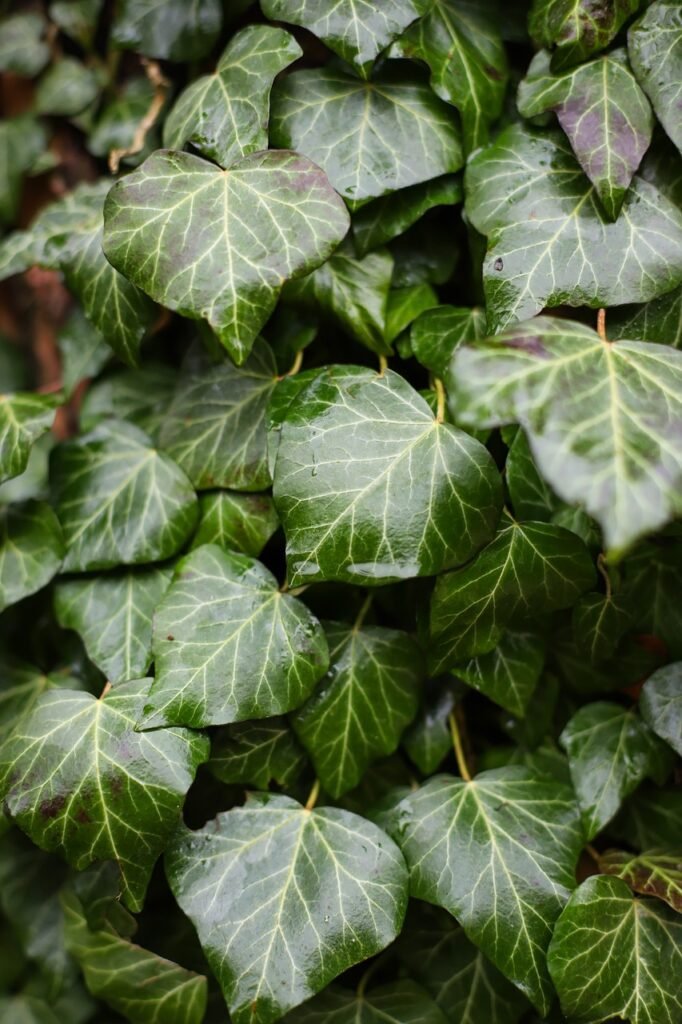
Versatile and Vigorous: One of the most remarkable qualities of English Ivy is its versatility. Whether grown as a ground cover, a climbing vine, or even in containers, this resilient plant thrives in a variety of conditions, from sun-dappled gardens to shady alcoves. Its vigorous growth habit makes it an ideal choice for concealing unsightly areas, controlling erosion, or adding vertical interest to outdoor spaces.
A Symphony of Shapes and Shades: The foliage of English Ivy is a visual symphony, boasting an array of leaf shapes, sizes, and variegation patterns. From the classic, glossy green leaves to variegated cultivars splashed with creamy whites or golden hues, there’s a kaleidoscope of options to suit every aesthetic preference. Additionally, English Ivy produces tiny, inconspicuous flowers in late summer or fall, which attract pollinators and add a delicate charm to the garden.
The Art of Care: While English Ivy is renowned for its adaptability and resilience, it still requires some care to thrive and maintain its beauty. Adequate watering, especially during hot and dry periods, is crucial, as is providing well-draining soil to prevent waterlogging. Regular pruning helps control its exuberant growth and encourages bushier, denser foliage. Additionally, occasional fertilization with a balanced, slow-release fertilizer can promote healthier growth and vibrant foliage.
Beyond Beauty: Beyond its ornamental allure, English Ivy offers a host of practical benefits to both gardeners and the environment. As a ground cover, its dense mat of foliage suppresses weed growth and helps conserve soil moisture, reducing the need for frequent watering and weeding. Moreover, English Ivy serves as a valuable habitat and food source for birds, insects, and other wildlife, enriching biodiversity and fostering a thriving ecosystem.
Cultivating Timeless Beauty: Whether adorning historic estates, urban landscapes, or quaint cottage gardens, English Ivy continues to weave its magic, enchanting all who encounter its timeless beauty. With its effortless elegance, adaptability, and myriad benefits, this enduring vine remains a beloved staple in the world of gardening, inspiring generations of enthusiasts to cultivate their own slice of green paradise.
In the ever-evolving landscape of horticulture, English Ivy stands as a steadfast symbol of enduring beauty, a timeless classic that continues to leave an indelible mark on the hearts and landscapes of gardeners around the world. So, why not invite a touch of timeless elegance into your own garden and let the enchanting tendrils of English Ivy weave their magic?
6. The Areca Palm (Dypsis lutescens):
Unlocking the Charm of Areca Palm: A Guide to Cultivation and Care
Nestled in the lush greenery of tropical landscapes, the Areca Palm (Dypsis lutescens) stands tall as a symbol of elegance and tranquility. With its graceful fronds and air-purifying capabilities, this popular indoor plant has earned a well-deserved spot in homes, offices, and landscapes around the world. Let’s delve into the captivating world of the Areca Palm, exploring its origins, cultivation techniques, and tips for optimal care.
Origins and Characteristics
The Areca Palm, also known as the Butterfly Palm or Golden Cane Palm, hails from Madagascar and is a member of the Arecaceae family. Its slender, yellow-green trunks rise gracefully, adorned with feathery fronds that arch elegantly outward.
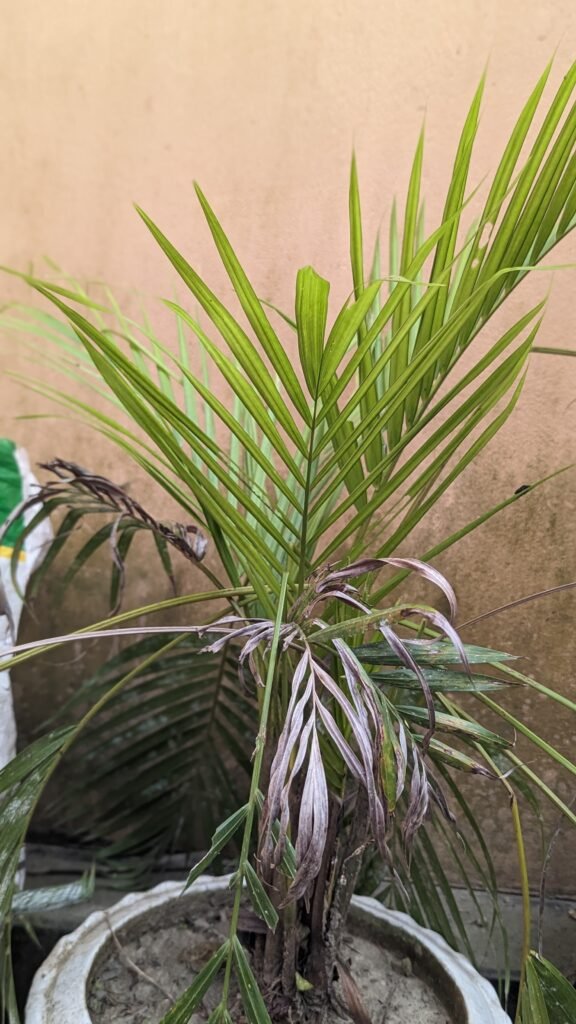
These fronds, reminiscent of a butterfly’s wings, lend the plant its enchanting appeal, making it a favorite choice for interior decorators and garden enthusiasts alike.
1. Air Purification: Areca Palms are renowned for their exceptional air-purifying abilities. Through the process of photosynthesis, they absorb harmful gases like formaldehyde, benzene, and carbon monoxide, while releasing oxygen, thereby improving indoor air quality. This makes them an ideal choice for homes and offices, where clean air is paramount for health and well-being.
2. Humidity Regulation: In addition to purifying the air, Areca Palms also act as natural humidifiers. Their large, lush fronds release moisture into the air, increasing humidity levels and creating a more comfortable and conducive environment, especially in dry or air-conditioned spaces.
3. Stress Reduction: Studies have shown that exposure to indoor plants, including Areca Palms, can reduce stress levels and promote a sense of well-being. The presence of greenery has a calming effect on the mind, helping to alleviate anxiety and enhance productivity. Incorporating Areca Palms into indoor spaces can thus contribute to a healthier and more harmonious living or working environment.
4. Aesthetic Appeal: With its graceful, arching fronds and vibrant green foliage, the Areca Palm adds a touch of tropical elegance to any room. Whether placed in a living room, office lobby, or hotel atrium, its striking appearance instantly elevates the decor, imparting a sense of freshness and vitality to the surroundings.
5. Low Maintenance: Despite its grandeur, the Areca Palm is surprisingly low-maintenance, making it suitable for both novice and experienced plant enthusiasts alike. With proper care, including regular watering, adequate sunlight, and occasional pruning, it can thrive indoors for many years, brightening up spaces with its verdant charm.
6. Versatility: One of the most versatile indoor plants, the Areca Palm can adapt to a wide range of indoor conditions, including varying light levels and temperatures. Whether placed in bright, indirect sunlight or partial shade, it continues to flourish, making it an excellent choice for different interior settings.
7. Feng Shui Symbolism: In Feng Shui, the Areca Palm is revered for its auspicious symbolism and positive energy. Believed to bring good luck, prosperity, and harmony, it is often placed in homes and offices to attract positive vibes and promote abundance and growth in all aspects of life.
8. Sustainable Living: As proponents of sustainable living gain momentum, Areca Palms emerge as eco-friendly champions. Not only do they contribute to cleaner air and a healthier environment, but they also play a role in reducing energy consumption by naturally cooling indoor spaces and decreasing the need for artificial humidifiers.
In conclusion, the Areca Palm stands as a verdant testament to the myriad benefits of incorporating nature into our indoor spaces. Beyond its ornamental value, it serves as a powerful ally in our quest for cleaner air, enhanced well-being, and sustainable living. So, whether you seek to create a tranquil sanctuary at home or foster a productive atmosphere in the workplace, consider inviting the Areca Palm into your space and bask in its green glory.
7. Boston Fern (Nephrolepis exaltata):
Unveiling the Verdant Elegance: Exploring the Benefits of Boston Fern
In the realm of indoor gardening, few plants exude the timeless elegance and verdant allure quite like the Boston Fern (Nephrolepis exaltata). With its gracefully arching fronds and delicate foliage, this botanical beauty has long been cherished not only for its aesthetic appeal but also for its array of benefits that extend far beyond mere decoration. Let’s delve into the delightful world of Boston Ferns and uncover the myriad advantages they bring to our homes and indoor spaces.
1. Air Purification: Boston Ferns are renowned for their exceptional air-purifying qualities. Through a process known as phytoremediation, these ferns efficiently remove harmful toxins such as formaldehyde, xylene, and toluene from the air, thus enhancing indoor air quality and promoting a healthier living environment.
2. Humidity Regulation: In addition to their air-purifying prowess, Boston Ferns are natural humidifiers. Their lush foliage releases moisture into the surrounding air, helping to increase humidity levels and combat dryness, particularly in indoor spaces with air conditioning or heating systems. This not only benefits the fern itself but also offers relief to occupants, especially during drier seasons or in regions with arid climates.
3. Stress Reduction: Studies have shown that the presence of indoor plants, including Boston Ferns, can have a calming effect on individuals and contribute to stress reduction. The vibrant greenery and soothing aesthetics of these ferns can help create a tranquil and inviting atmosphere, providing a sense of relaxation and well-being amidst the hustle and bustle of modern life.
4. Allergy Relief: Unlike some houseplants that may exacerbate allergies due to pollen production, Boston Ferns are considered hypoallergenic. Their dense foliage traps airborne particles and allergens, effectively reducing dust, pollen, and other allergens in the indoor environment. This makes them an excellent choice for individuals prone to allergies or respiratory sensitivities.
5. Aesthetic Enhancement: Beyond their functional benefits, Boston Ferns add a touch of natural beauty and sophistication to any interior space. Whether showcased as a standalone centerpiece or incorporated into a lush green ensemble, their graceful fronds and cascading foliage impart a sense of freshness and vitality, instantly elevating the ambiance and visual appeal of indoor settings.
6. Low Maintenance: Ideal for both novice and experienced gardeners alike, Boston Ferns are relatively low-maintenance plants. They thrive in indirect light or partial shade and prefer consistently moist, well-draining soil. With regular watering and occasional fertilization, these resilient ferns can flourish indoors with minimal effort, rewarding caretakers with their enduring charm and vitality.
7. Versatile Decorative Element: From cozy living rooms and sunny balconies to office spaces and humid bathrooms, Boston Ferns adapt well to various indoor environments. Their versatile nature allows them to be showcased in an array of decorative settings, whether hanging from macramé planters, adorning shelves and mantels, or gracing tabletops with their graceful presence.
In conclusion, the Boston Fern stands as a testament to nature’s inherent ability to beautify and enrich our indoor spaces while offering a multitude of practical benefits. Beyond its ornamental value, this resilient fern serves as a living testament to the harmonious relationship between humans and plants, reminding us of the profound connection we share with the natural world. So, why not invite the timeless elegance of the Boston Fern into your home and experience the transformative power of greenery firsthand?
These plants not only enhance the aesthetic appeal of your home but also contribute to a healthier indoor environment by improving air quality.

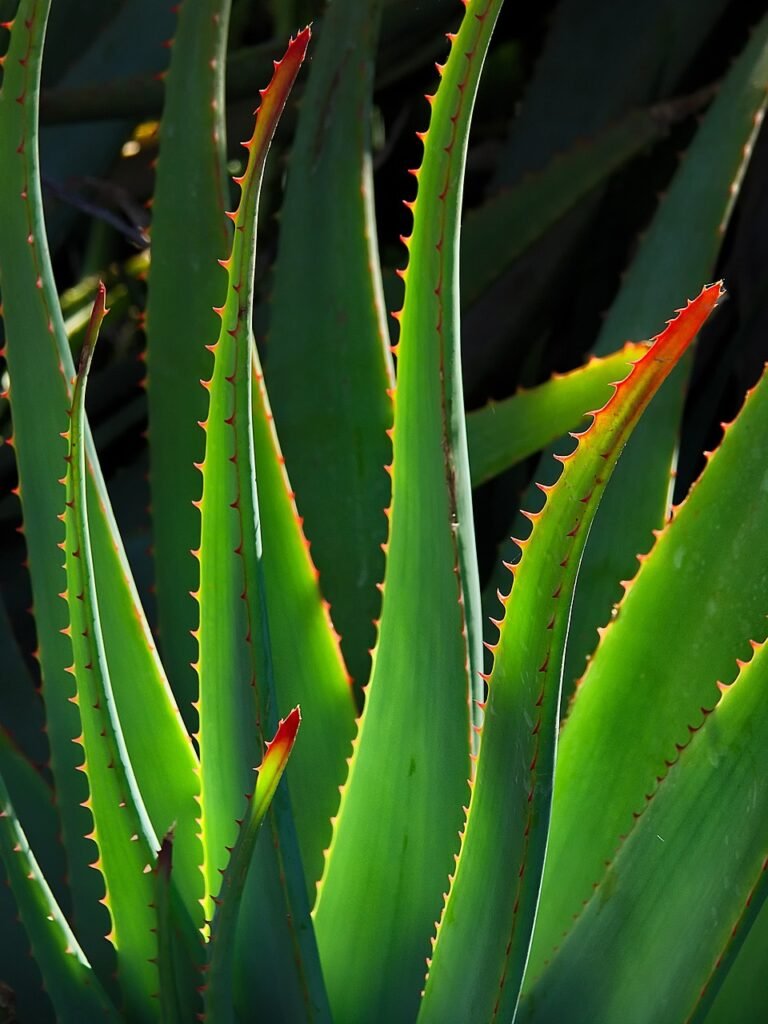
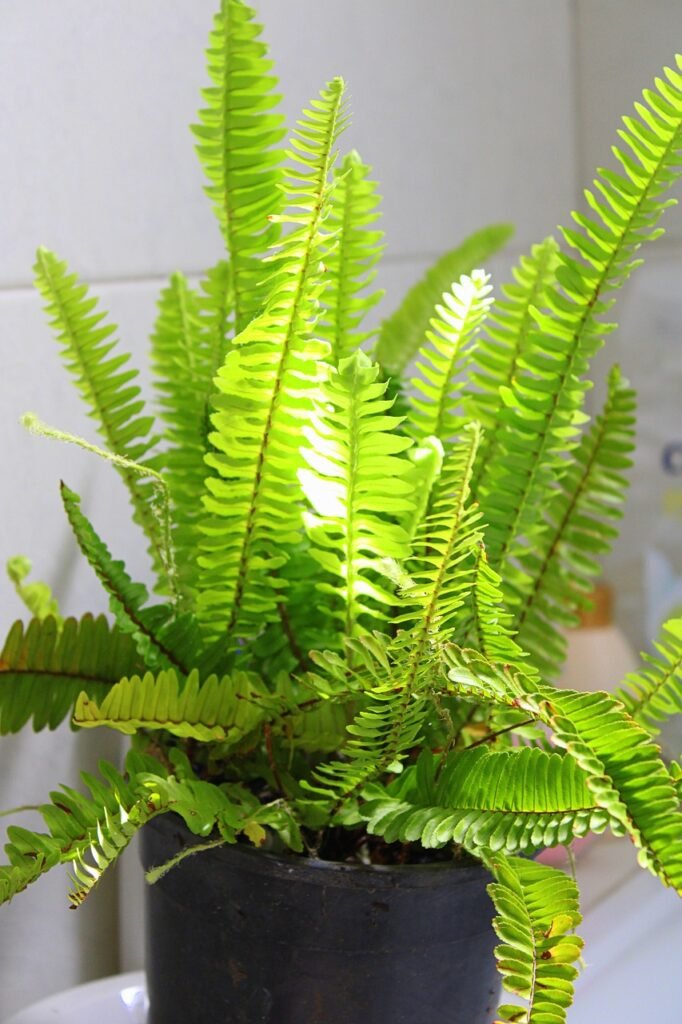

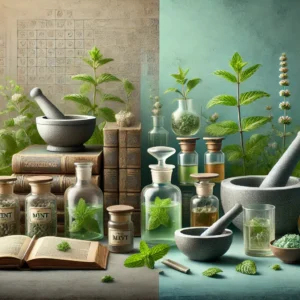

Thanks for every other wonderful post. The place else could anyone get that type of information in such aan ideal manner of writing?
I have a presentation next week, and I amm at the look for such
information. https://Zeleniymis.Com.ua/